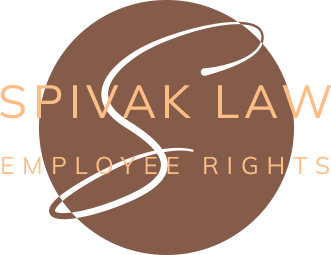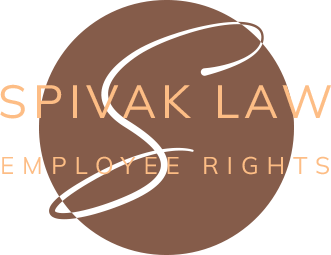
Discrimination Against Asian Americans
Asian Americans are a very diverse population with rich and varied cultures, ethnicities, and backgrounds. Asia is a massive continent with a multitude of countries, each with distinct cultures, languages, and traditions. Asian Americans can trace their ancestry to places like China, India, Korea, Vietnam, Japan, the Philippines, and many more.
Discrimination against Asian Americans, also known as anti-Asian racism, refers to the unfair treatment of Asian Americans based on their race or ethnicity. It can manifest in various ways, both blatant and subtle, hindering their opportunities and creating a hostile environment. Within these countries, there are numerous ethnicities with unique heritages and customs. For example, within the category "Asian American," you'll find people who identify as Chinese, Vietnamese, Hmong, Korean, Indian, Pakistani, and many more. Asia is home to a wide range of religions, from Buddhism and Hinduism to Islam, Christianity, and Sikhism. Asian Americans reflect this diversity in their religious practices and beliefs. The languages spoken by Asian Americans are just as diverse as their ethnicities. Some may speak Mandarin Chinese, Hindi, Vietnamese, Korean, Tagalog, or any of the many other languages spoken across Asia. The Asian American experience is not monolithic. Immigration history, socioeconomic status, and cultural background all play a role in shaping individual experiences.
Discrimination against Asian Americans in the workplace can be subtle and insidious, often taking the form of stereotypes, microaggressions, and limitations on advancement.
Here's a breakdown of how it can manifest:
- The Model Minority Myth: This stereotype portrays Asian Americans as universally intelligent, hardworking, and uncomplaining. While it might seem positive on the surface, it can create unrealistic expectations and pressure to perform flawlessly. It can also downplay the diversity of experiences and challenges faced by Asian Americans.
- Microaggressions: These are subtle but constant verbal or nonverbal insults that communicate hostile or racist ideas. Examples include:
- Assuming all Asians are good at math or engineering.
- Asking intrusive questions about someone's nationality or origin.
- Making jokes or comments about Asian cultures that rely on stereotypes.
- Using broken English to mimic Asian accents.
- The Bamboo Ceiling: This term refers to the invisible barrier that prevents Asian Americans from reaching leadership positions. They might be seen as competent workers but stereotypically lacking the charisma or assertiveness needed for leadership roles.
- Limited Networking Opportunities: Social and professional networks are crucial for career advancement. Asian Americans might be excluded from informal gatherings or social events where networking happens, hindering their ability to build connections and access opportunities.
- Lack of Recognition for Achievements: Contributions from Asian American employees might be overlooked or downplayed. They might have to work harder than their colleagues to get noticed and credited for their work.
- Pressure to Assimilate: Asian American employees might feel pressure to conform to majority-culture norms in dress, communication style, or social behavior to fit in and avoid being seen as "different."
- Language Barriers: For Asian immigrants who are not fluent in English, communication difficulties can limit their opportunities and make them feel isolated or undervalued.
- COVID19 Myths: The scientific consensus points to the emergence of COVID-19 in Wuhan, China. This doesn't make Chinese people, or Asian Americans in general, responsible. Blaming Asian Americans for COVID-19 is a form of xenophobia and racism. Associating a virus with an entire race reinforces negative stereotypes and can lead to discrimination and violence against Asian Americans.
These discriminatory practices can have a significant negative impact on Asian American employees, leading to:
- Reduced Job Satisfaction and Morale: Feeling ostracized or undervalued can make it difficult to enjoy work and feel like a valued member of the team.
- Increased Stress and Anxiety: Constant microaggressions or a hostile work environment can create significant mental health burdens.
- Lower Productivity: Feeling unwelcome or unsupported can hinder focus and make it difficult to concentrate on work tasks.
- Limited Career Advancement: Unconscious bias and the bamboo ceiling can restrict opportunities for promotion and leadership roles.
The following can reduce discriminatory workplace behavior against Asian Americans:
- Diversity and Inclusion Training: Companies can implement training programs to educate employees about unconscious bias and Asian American experiences in the workplace.
- Mentorship Programs: Connecting Asian American employees with mentors who understand their challenges and can advocate for them can be beneficial.
- Employee Resource Groups: Providing spaces for Asian American employees to connect and support each other can foster a sense of belonging.
- Clear Anti-Discrimination Policies: Having clear policies that prohibit discrimination based on race or national origin and outline complaint procedures is crucial.
By creating a workplace culture of respect and inclusivity, employers can ensure a fair and equitable environment for all employees, regardless of their race or ethnicity.
If you have been a victim of discrimination at work, call us for help.

Types of Employment Law cases we take
Contact The Spivak Law Firm Today
.2302071229196.jpg)

